Hiroyuki Miura (PLUSVoice, Inc. President and Representative Director)| Realize the “true communication”
2025.07.08
Photographer
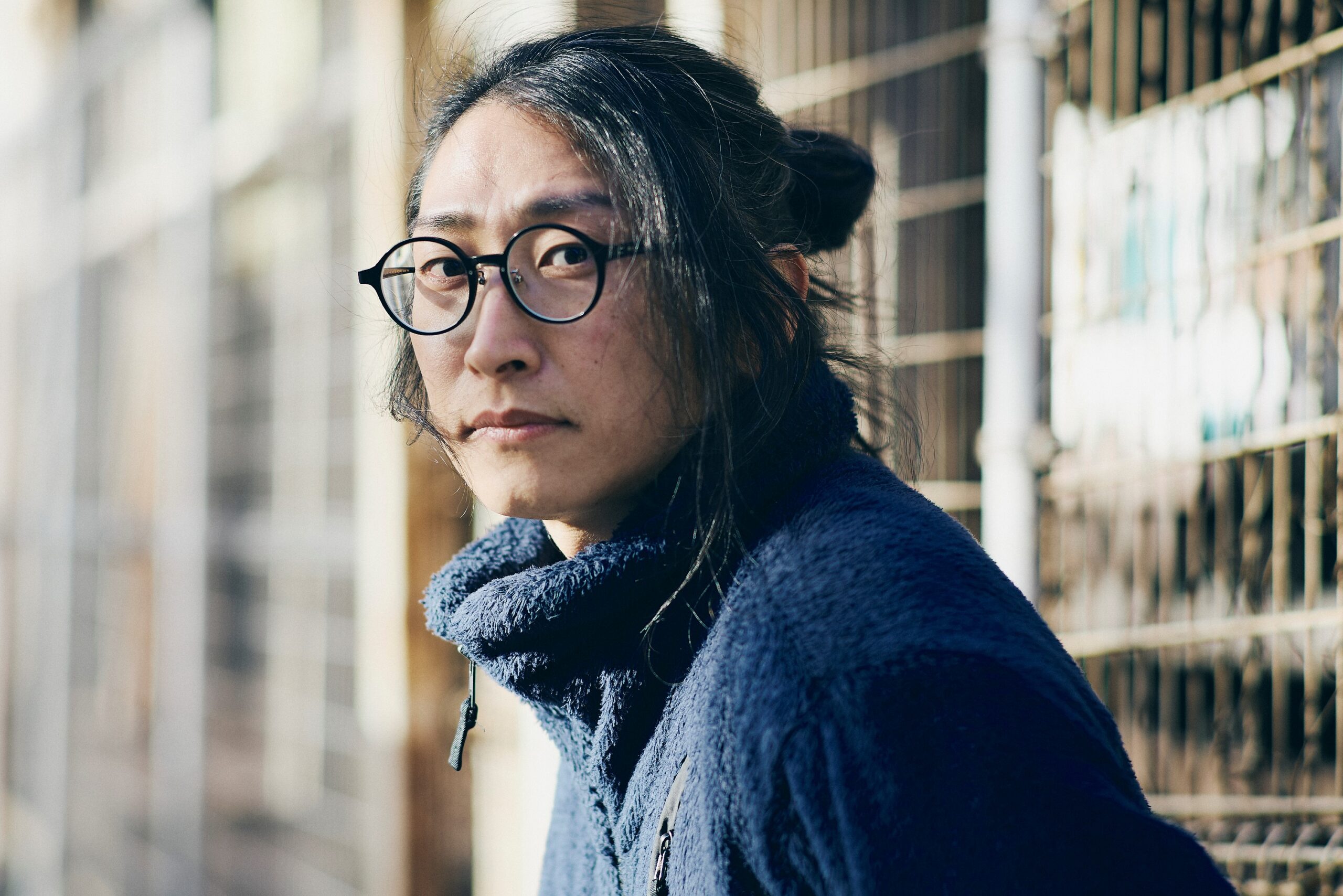
2024.02.09
As if peering into an aquarium,
Photographer Harumichi Saito checked each one with his clear eyes.
It was as if everything he saw was new to him.
Since the moment he connected with the world, his world has been filled with many words.
Through the viewfinder, he looks at the world.
Today, something or someone must be speaking to him.
目次
-Why did you become a photographer?
Harumichi-san I have originally disliked photography. Both taking pictures and being taken pictures. During my childhood, I received pronunciation training. I was told by that teacher that I should wear hearing aids and read oral speech, and that I should not use sign language because it is embarrassing. However, because of my hearing aids, my hearing was limited and I had no choice. When I entered high school, I entered Shakujii School for the Deaf, which happened to be located nearby, with a feeling of resignation, saying, “I’ll just stay here,” but then I encountered sign language.
With audio, I used to listen to people while worrying about what they were saying, but with sign language, I don’t have to worry about that anymore. I was truly moved. I enjoy talking, I enjoy every day, and I want to leave something of this time. That’s how I started taking pictures of myself speaking in sign language. At first, I used a “Utsurundesu ” camera, but I found it difficult to capture the sign language image I wanted with a disposable camera. I wanted to take pictures that were closer to my image, and that is when I decided to study cameras.
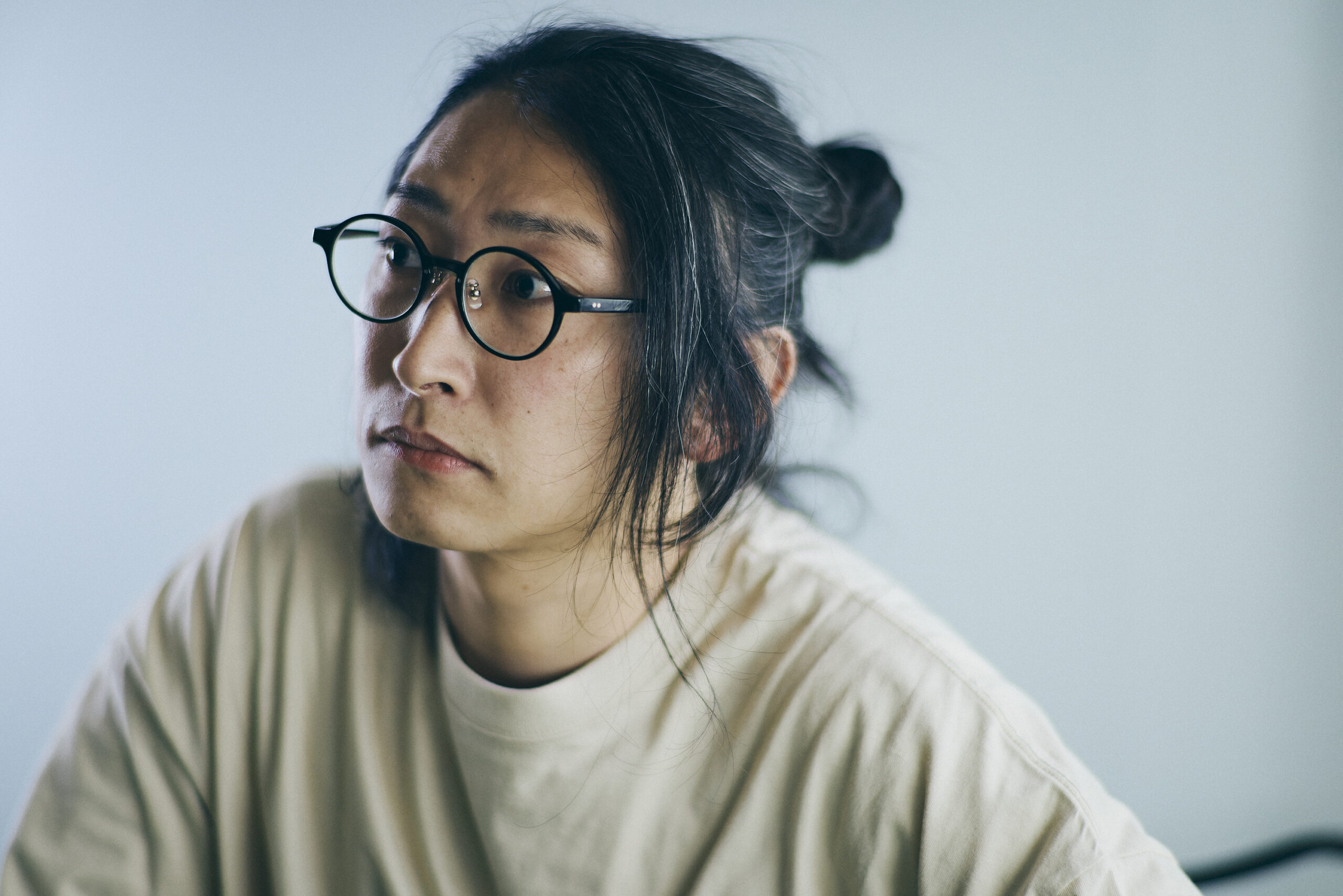
-And then you got more and more seriously into it?
Harumichi-san I started studying with the sole intention of capturing sign language as I imagined it, but gradually I wanted to buy better and better equipment. I bought a camera little by little, and as I learned the techniques, I realized that this camera could do this, but not that, and I wanted to get a better camera…and so on. I went to a photography school in Osaka for a year and a half, but there were no information guarantees or sign language interpreters. So I just watched and stole as I went along. I borrowed and used all kinds of equipment at the school and read a lot of books in the library.
-Are you a photographer right out of school?
Harumichi-san I was an office worker at one time. I worked in an industry like Internet mail-order sales, updating the web. I was not a serious businessman at all. All the while, I continued to take photographs on my days off. I quit the company after about three years and worked part-time as a live-in in the snowy mountains, but I was taking pictures all the time during that time.
I also entered photography contests, and won an honorable mention in the Canon New Cosmos of Photography for a photo called “タイヤ(Tire)”. The next year, I won an excellence award for my photograph “同類(Dourui)”. In parallel, I decided to publish a photo book, and that was when I was 23 years old.

-What is the meaning behind the title of the book, “せかいはことば(Sekai wa kotoba)”?
Harumichi-san For example, take a picture of a place where nothing seems to be there now. Look at it, take some time, and then look at the picture again. When I do this, a special feeling arises. It’s like…the photo is speaking to me. I look at the world and wonder if everything I see is a “word,” or something like that.
(Pointing) There’s a cord right there, squishy. Even things that we would normally overlook, something intrigues us when we photograph them and take a closer look. The undulation of the cord looks strange, and you notice the beauty of the colors anew. I think this is also “word”.
-Do you have a specific subject that you want to photograph?
Harumichi-san What I find interesting to photograph now are “children”. It is interesting to take pictures in which you can see the connection between a small child and the larger world (with arms outstretched).
-A photograph of a baby with dust dancing in a light-illuminated space is impressive.
Harumichi-san I thought of the dust on a one- or two-month-old baby as if it were the universe. The theme of my photography is that small things, beings that are often thought of as speechless or weak, are really connected to the big, big world, like the universe. I am not interested in taking beautiful pictures of beautiful things. To take photographs that connect small beings with grand images. That is very interesting and I like that.
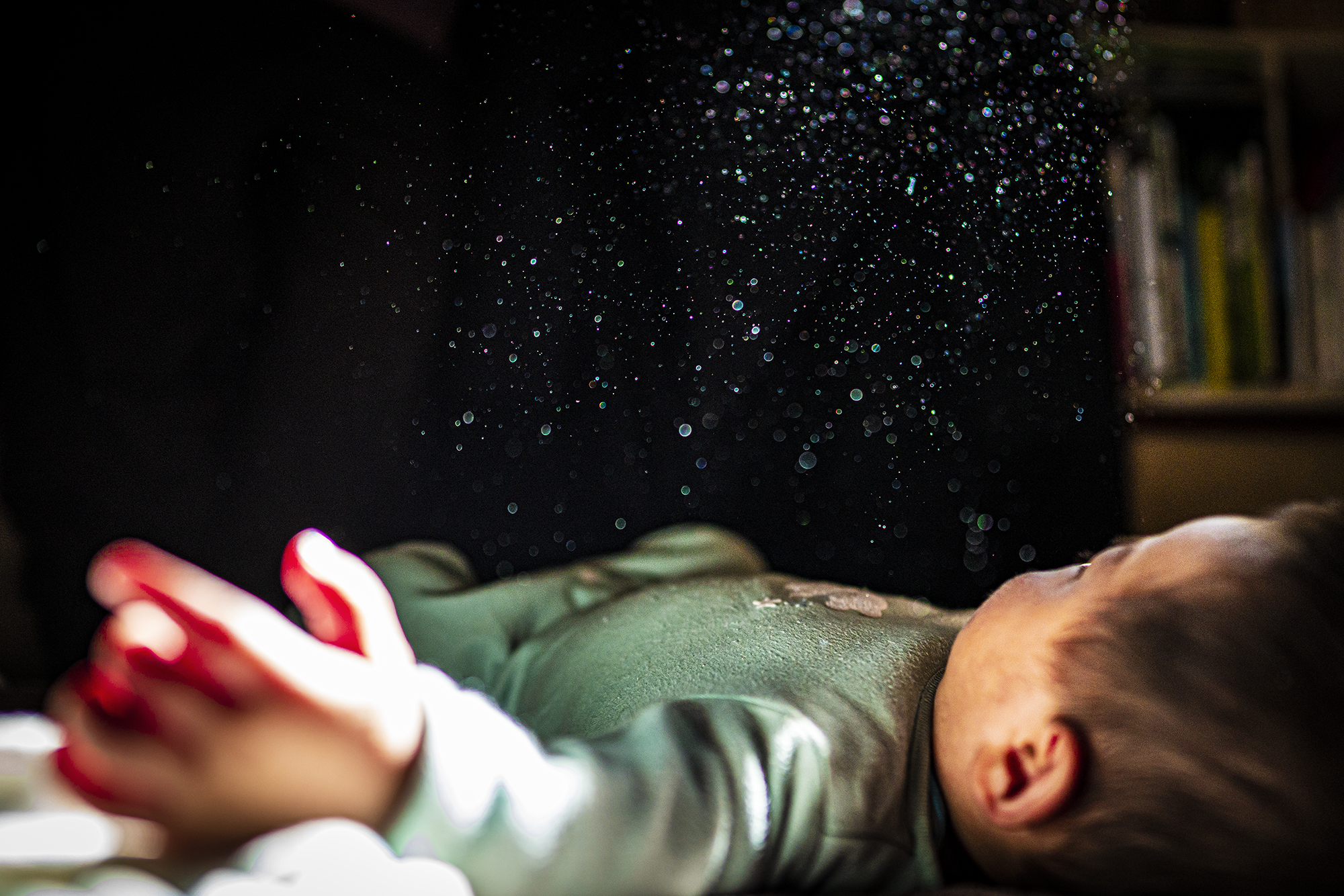
-The web project “Co-coco” corner* introduces deaf people in various occupations. What was the reason for implementing this project?
Harumichi-san I have been thinking about what my teacher at the school for the deaf said to me. “The truth is that Deaf people can get all kinds of jobs, but there is very little information about where they actually work and how they work. So, we only have an image of jobs such as clerical work or simple tasks.”
I didn’t have an image of a wide range of occupations either, when I entered society, I found Deaf people working in various occupations. I felt that I had to create something that brought together the fact that there were Deaf people working in various occupations.
*”Kokoko,” a creative magazine for visiting welfare / “Visiting Working Deaf People”:
A series of portraits and interviews with working deaf people, introducing them and visiting various people.
https://co-coco.jp/series/hataraku/
-You have interviewed people from all over Japan.
Harumichi-san Yes, I guess I get a lot of referrals from friends. I wish I could update more quickly, but it takes time and is quite difficult. But I have to do it. I will do my best.
-There are not only photos but also videos. Why is that?
Harumichi-san I thought it would be better to include the person’s sign language because it would convey a softer image of the person as a human being. Even if you don’t understand the sign language, I believe you can get a sense of the rhythm of the person’s speech. I don’t use any subtitles, and I omit the audio as well.
We have received comments from children at the School for the Deaf that we can do this kind of work. However, it is not enough that only the Deaf people themselves know about it. It is important to change the image of the adults around Deaf people. Even if a Deaf child wants to do such a job, if the adults around him or her say, “It’s impossible because there are no Deaf people doing such work, so don’t do it”, then their dream will be destroyed.” If they see this “Visiting Working Deaf People” and have a little knowledge that they can do various jobs in this way, if they are told it is impossible, they can say “no,” and the people around them will be less likely to say “impossible” or “can’t do it. I think it is significant to be able to create that kind of effect.
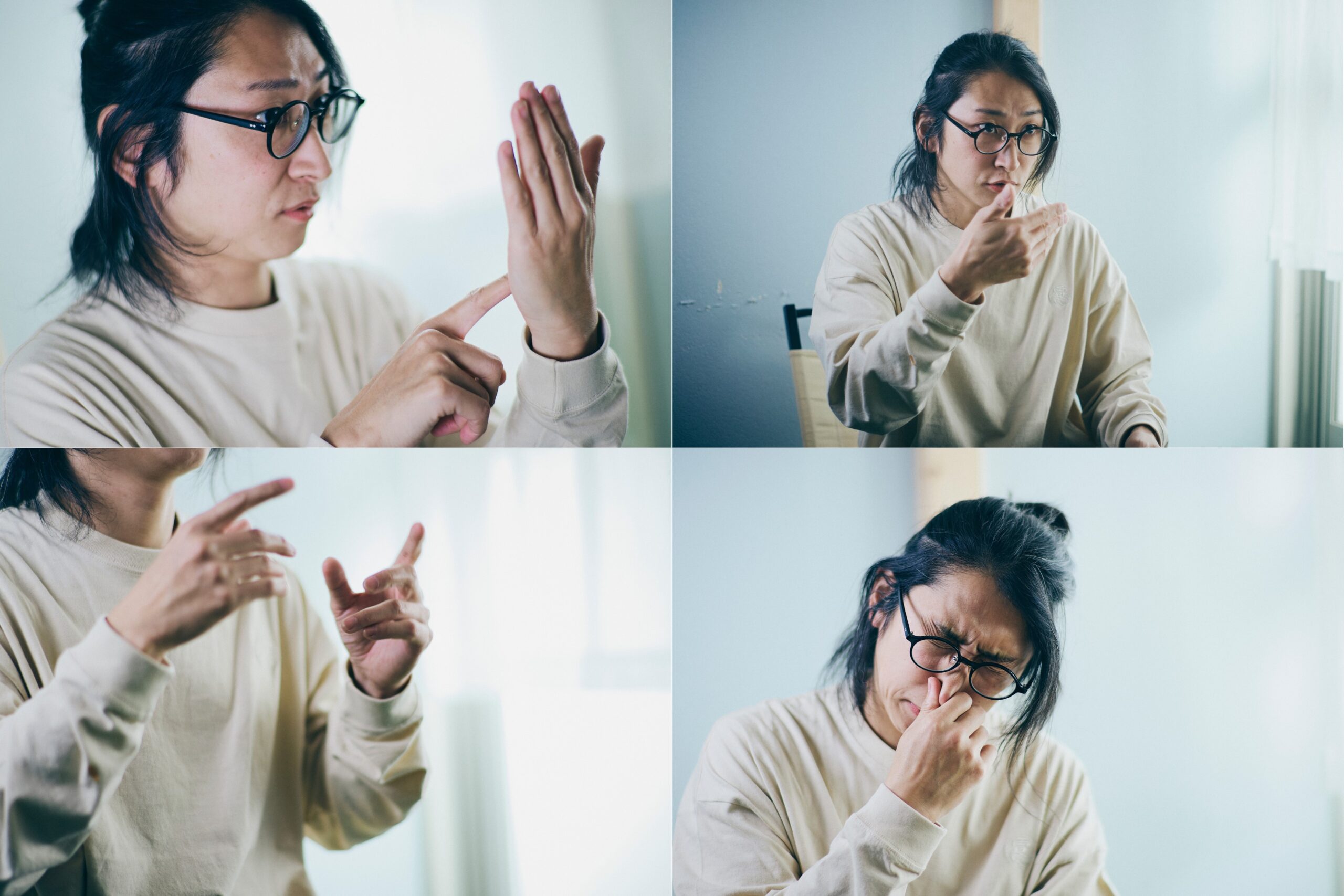
-Are you a member of Dog Legs, a professional wrestling organization for the disabled?
Harumichi-san I’m not interested in professional wrestling myself. I was originally aware of Dog Legs, and I was attracted to the wrestlers there because I thought they were so cool. I went to visit the organization and somehow ended up joining.
-Have you actually participated in a match?
Harumichi-san Yes. The only requirement for belonging to the club was that you have a disability, but since the Deaf look no different from able-bodied people when they are alone, my friend who was going to join Dog Legs first asked me to join as a partner, and I joined as well.
I really had matches with people with various disabilities. The most memorable match was with a man who could not move from the chest down. I had to fight with my legs and hands tied up so that we could fight under the same conditions. We got into a head-butt and I lost. It was a good match.
-An unexpected aspect.
Harumichi-san We take pictures in the ring after the match, and they are very good pictures. I feel like I am fighting to get that picture. Among people with various physical disabilities, I speak in writing, but there are people who cannot speak in writing because they are blind, cannot move their hands, or have some other physical disability. So they can’t have a conversation. But when we get in the ring, we are communicating with each other by bumping into each other’s bodies with all our might. Each round is 3 minutes long, but even though it’s only 3 minutes, the pictures we take after the match are very good. I have come to believe that there is also communication through the body.
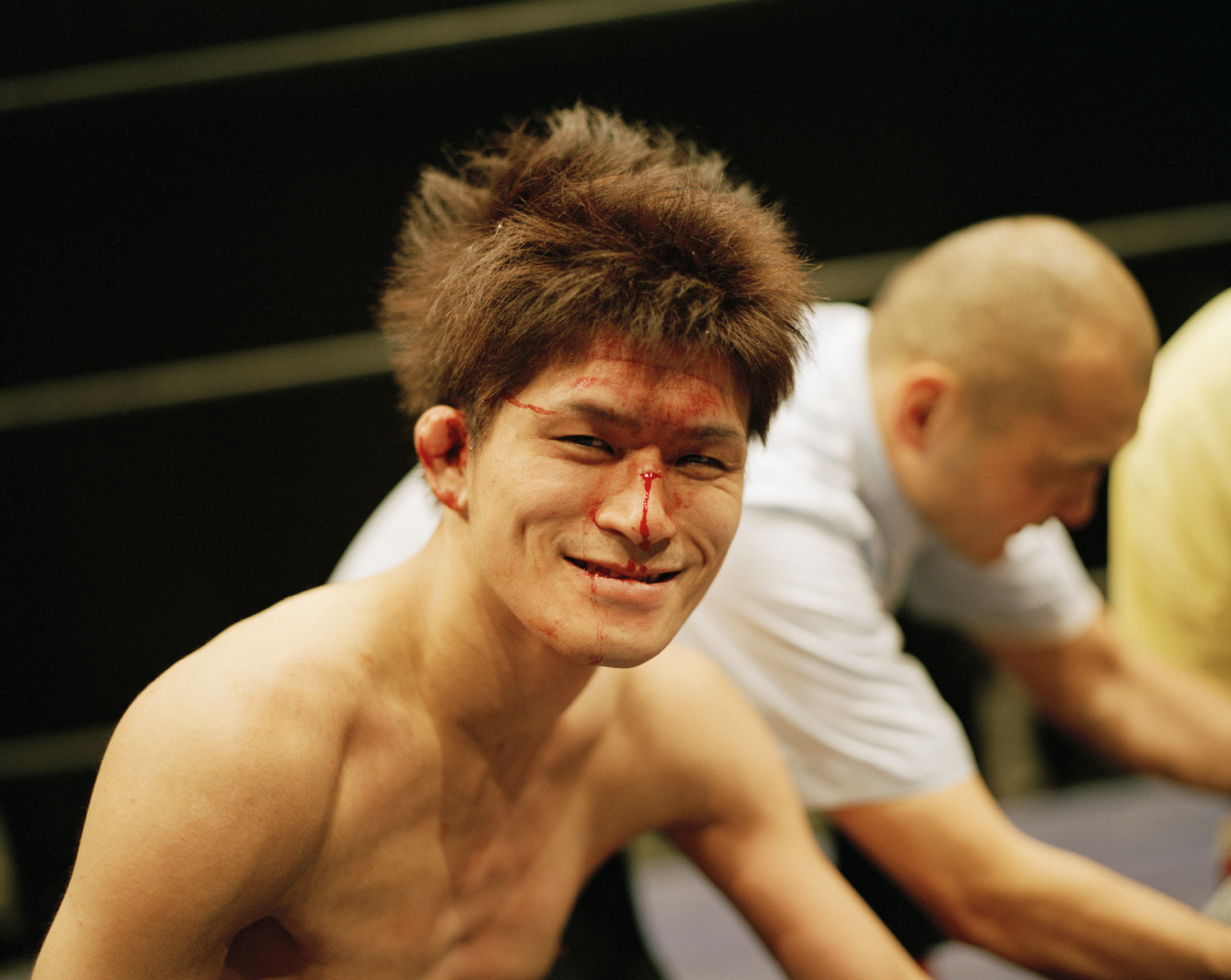
-The TV animation “Shuwa Wan! * is an animated version of Harumichi-san’s picture diary about raising his child. What impact did the birth of your child have on you?
Harumichi-san Of course I was impressed, but I was more anxious. How could I, a sign language user, raise my child? There was very little information on child-rearing with sign language.
*Sign language animation “Shuwa Wan! :
An animated version of Harumichi Saito’s child-rearing diary. It depicts the rich communication and humorous daily life of a parent and child between his deaf wife and his two (at the time) hearing sons. Available on NHK E-television from time to time.
https://www.nhk.jp/p/shuwawan/ts/9L3764QVYG/
-Why did you decide to write a picture diary?
Harumichi-san I would like to preserve each and every one of them, not taking it for granted that we can understand each other’s words. So I decided to draw manga anyway, even if I was not very good at it, and keep a record of it. I kept a daily cartoon diary for about four or five years. There are almost no records of child-rearing in sign language by the deaf, so I was able to keep writing because I wanted to leave a record for posterity. I could not continue to do it just for the sake of loving my children.
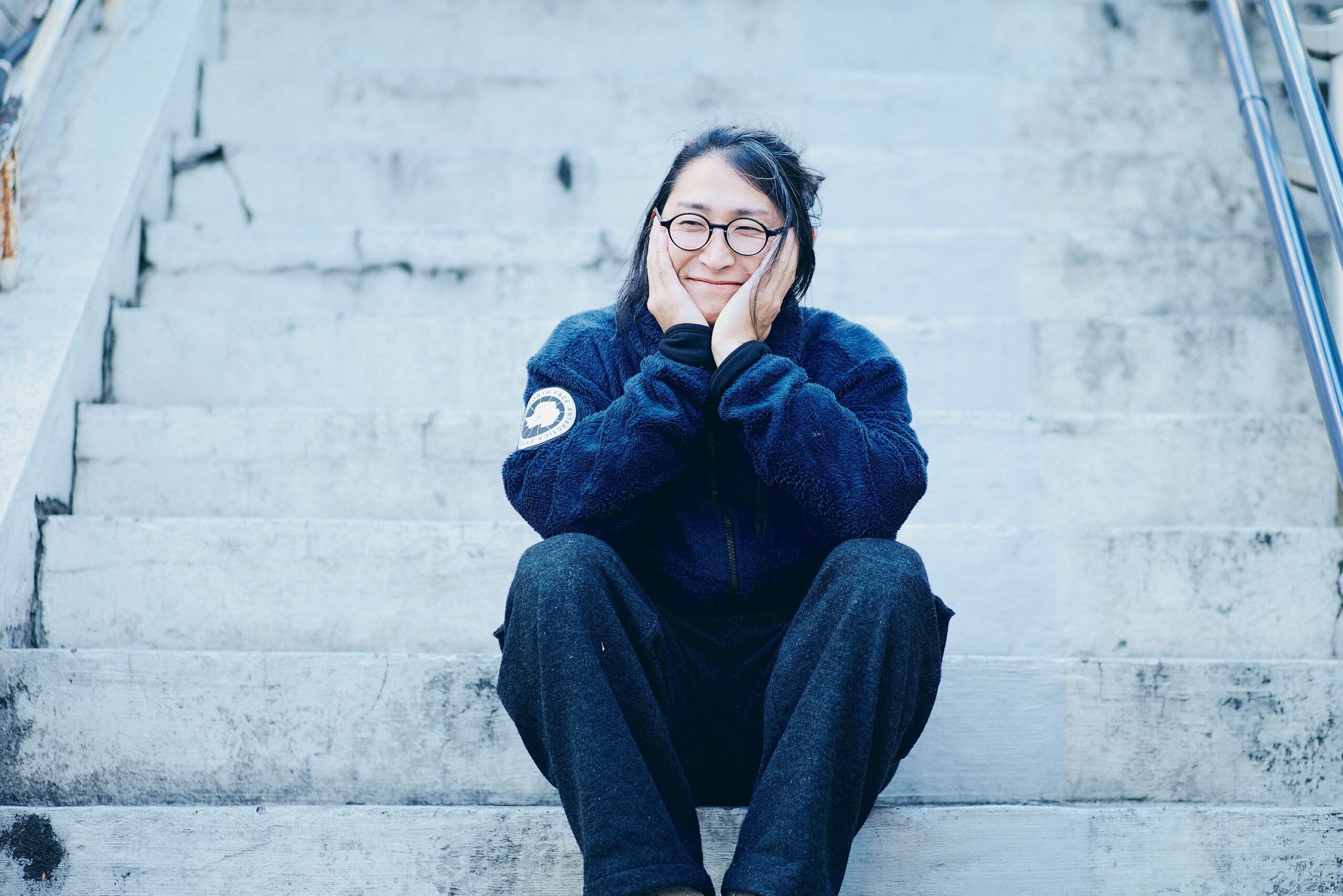
-Does it mention that things didn’t work out with your child?
Harumichi-san My Child can hear, so he learnes Japanese by ear. I need to translate from Japanese to sign language, but my child seems to be confused in their head. For example… “Rusoya”.
-“Rusoya”?
Harumichi-san My child wants to watch “Rusoya” in sign language. So I asked him, What is “Rusoya”? I asked him. But the child didn’t know how to explain and insisted, “I want to see ‘Rusoya’”. He kept repeating, I want to see it, I don’t know, I want to see it, I don’t know, and finally he started to cry.
So I changed the way I asked the question. What shape is it? What color is it? Then I found out that it was about a sentai hero called “Ryuso Jar.” He puts “ryu” as “ru,” “so” as “so,” and “jar” as “ya”. He was around 2 or 3 years old at that time. I thought it was amazing that he was confused between Japanese and sign language, but he was trying his best to communicate, and at the same time, I thought it was a lot of work.
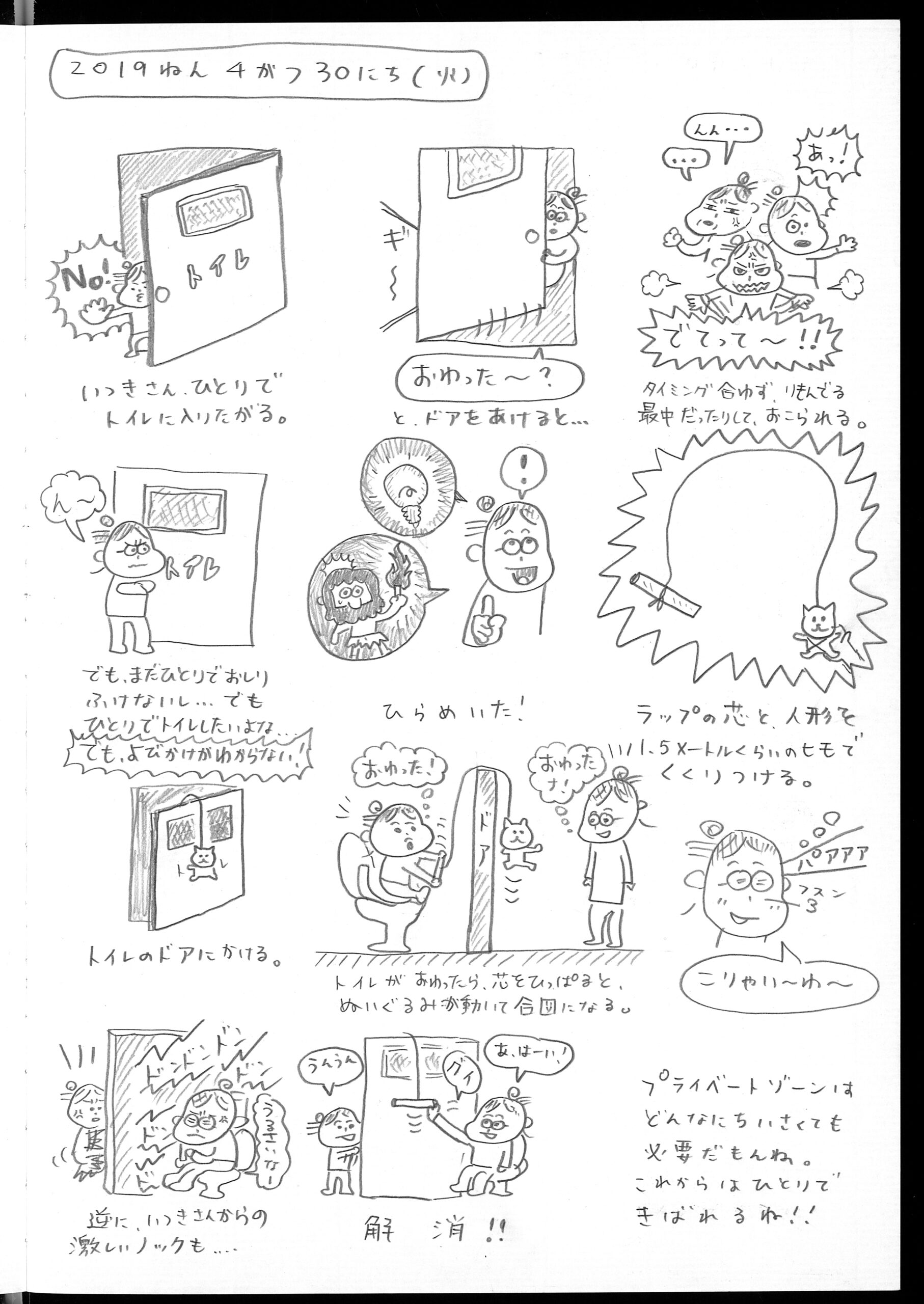
-What do you expect from the 2025 Deaflympics?
Harumichi-san I hope that you can create an atmosphere where as many people as possible can use the sign language for “Thank you” easily. I think there are people who know “Thank you” and other simple signs, but I have encountered several situations where people seem to be at a loss as to when to say them. I would like to see an atmosphere where people can say “Thank you” quickly when they realize that someone is a foreigner, and sign language can be used immediately when they realize that someone cannot hear.
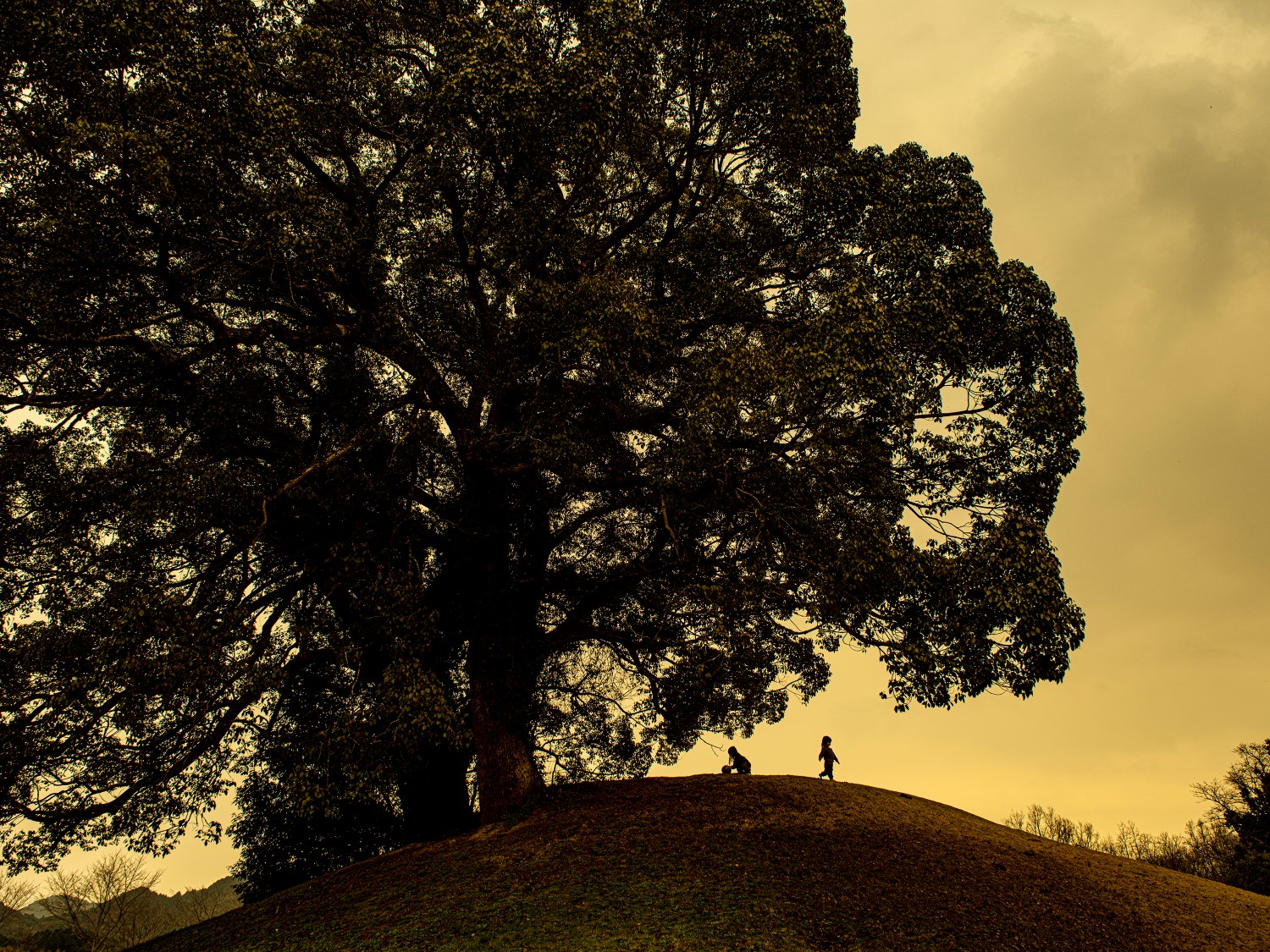
-What kind of photographer do you want to be?
Harumichi-san I hope people think of me that way, “I don’t know what I’m doing.”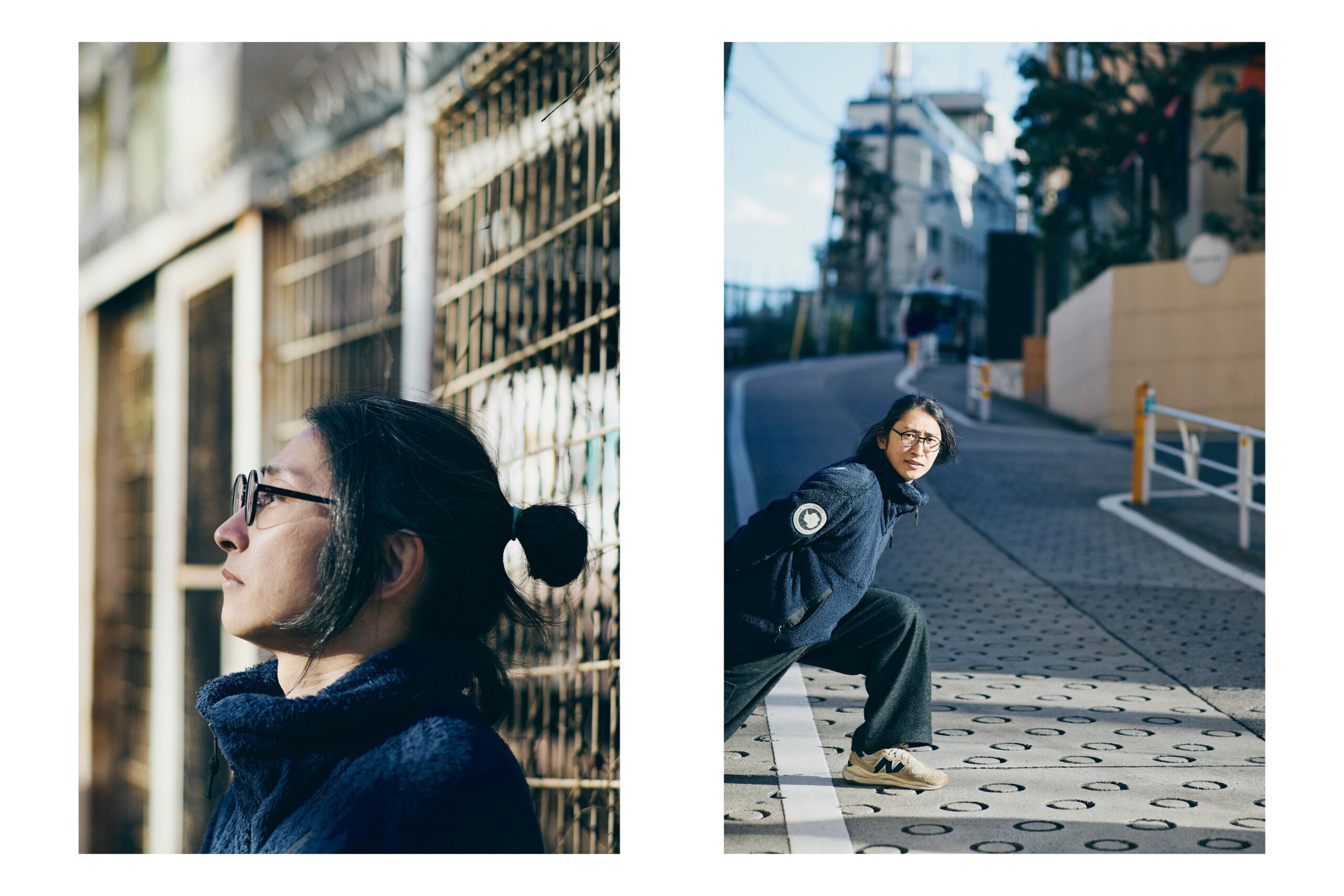
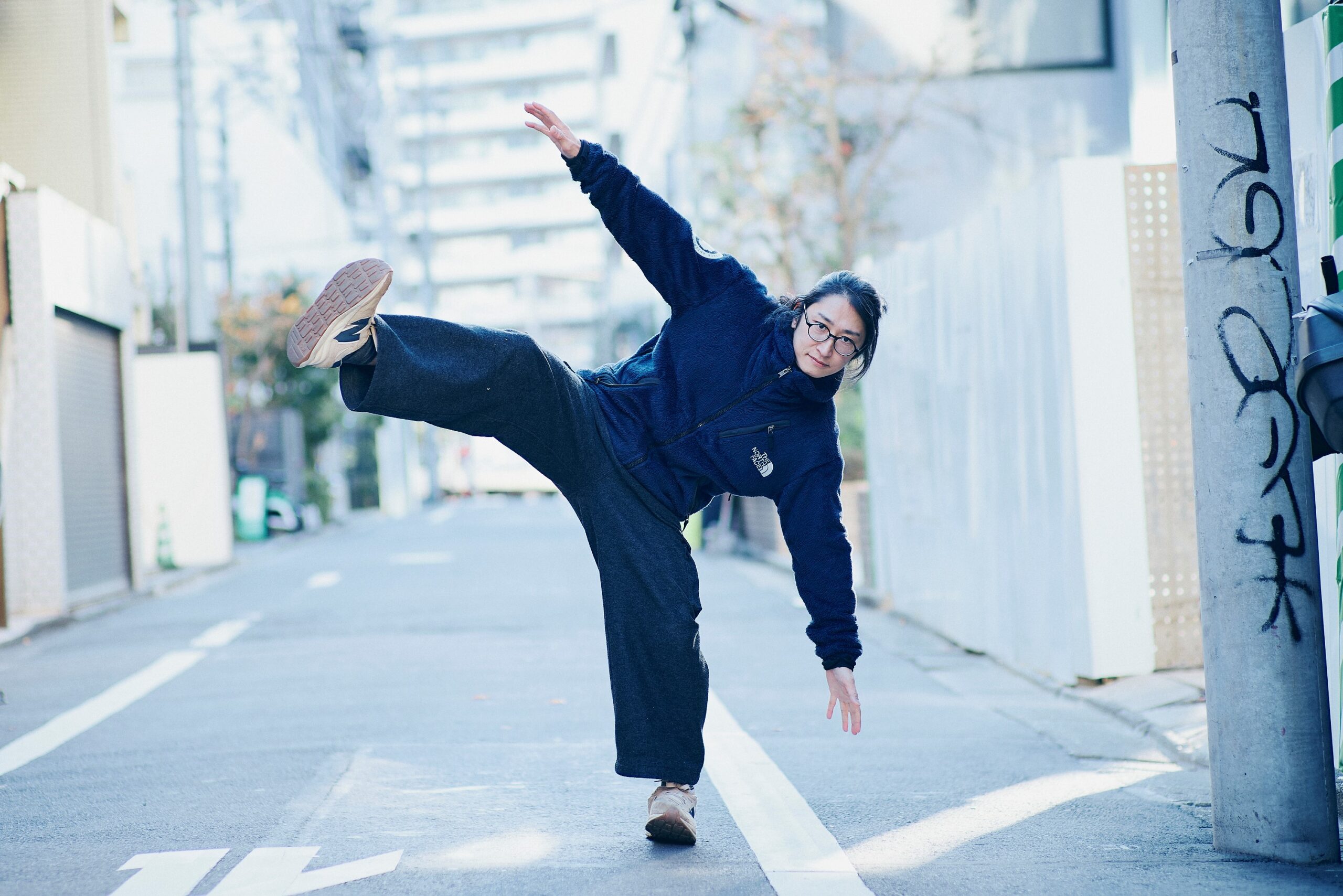
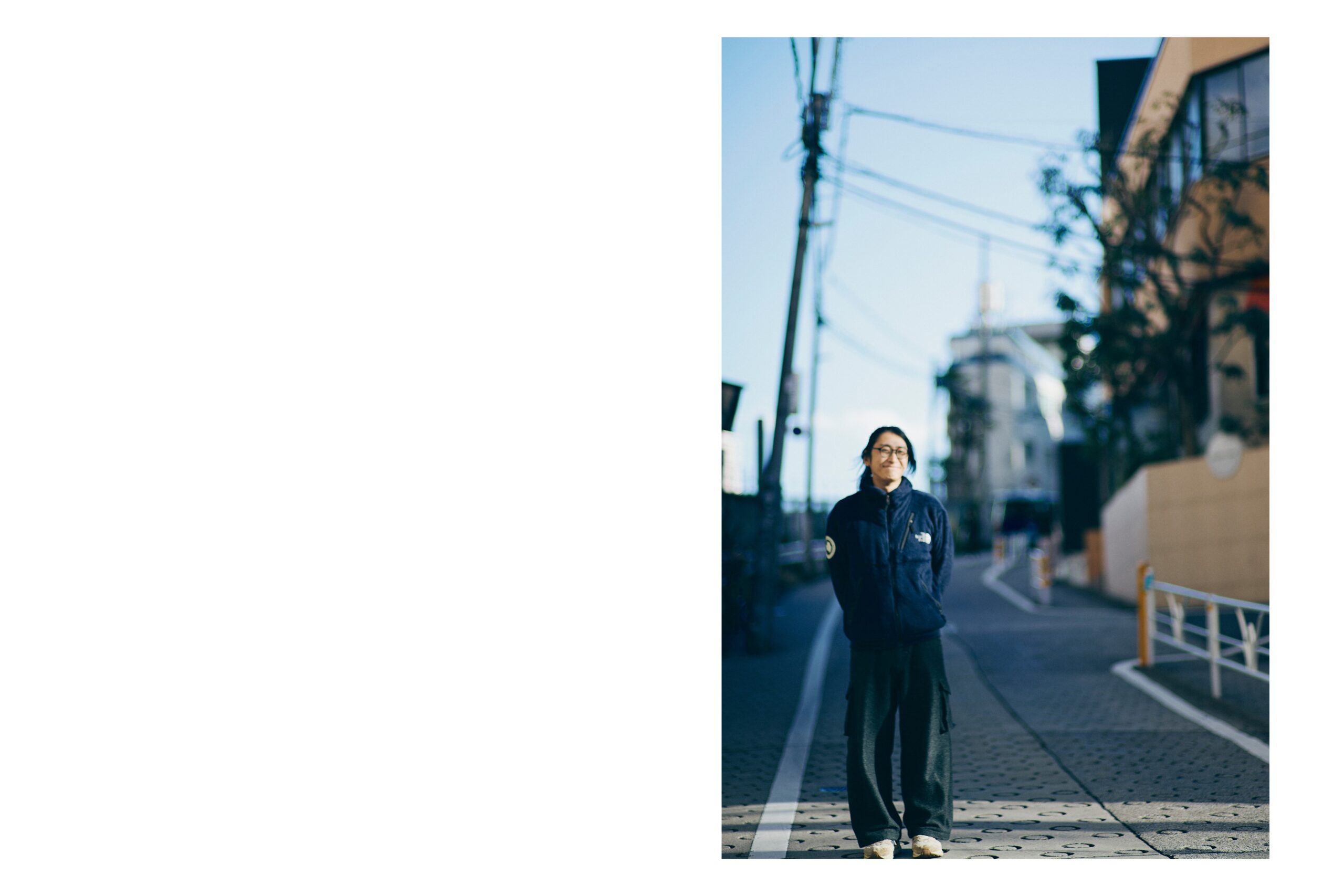
Harumichi Saito / Born in Tokyo
Photographer
Graduated from Tokyo Metropolitan Shakujii School for the Deaf, and has lived in Kumamoto since 2020. He is a member of Dog Legs, a professional wrestling organization for the disabled as Hinomichi.
In 2010, won the New Cosmos of Photography Excellence Award; in 2013, had a solo exhibition at the Watari-Um Museum of Contemporary Art; in 2014, won the Newcomer’s Award of the Photographic Society of Japan.
He was a finalist for the Ihei Kimura Photography Award for his photo book “感動(KANDO)” and its sequel “感動、(KANDO,)” both published by AKAAKA Art Publishing, Inc.
His publications include “よっちぼっち(Yochi Bochi)” (Kurashi-no-techo), “ゆびのすうじ へーんしん(Yubi no Suji Henshin)” (Alice-kan), “育児まんが日記 せかいはことば(Ikuji Manga Nikki Sekai wa Kotoba)” (Nanarokusha), “異なり記念日(Kotonari Kinenbi)” (Igakushoin Series: Opening Care, 73rd Mainichi Publication Culture Award in Planning Category), and “声めぐり(Koe Meguri)” (Shobunsha).
In 2022, he wrote the lyrics for “きんらきら ぽん(Kinrakira Pon)”, the ending song for NHK E-television’s “おかあさんといっしょ(Okaasan to issho)”. He is expanding his activities not only as a photographer and a writer.
Instagram:harumichisaito
X:@saitoharumichi
Website:齋藤 陽道
2025.07.08
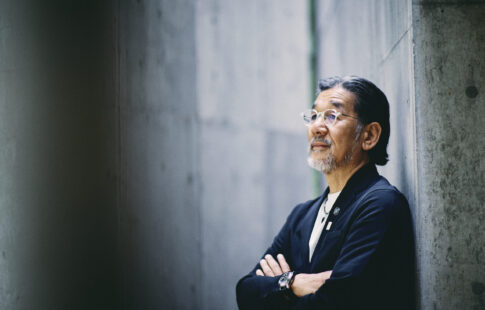
目次It all started with the worst MC of his lifeThe reality of being left out of information Issues highlighted […]
2025.07.08
目次It all started with the worst MC of his lifeThe reality of being left out of information Issues highlighted […]
2025.07.08
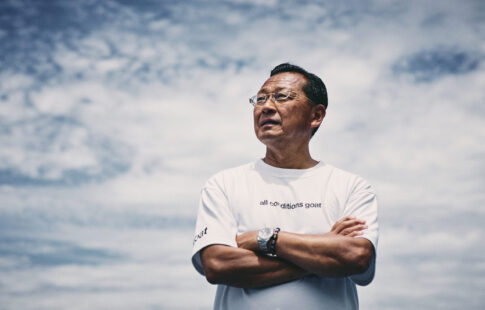
目次“An charismatic person appears…” Reforms to make athletes’ dreams come trueHakone or the w […]
2025.07.08
目次“An charismatic person appears…” Reforms to make athletes’ dreams come trueHakone or the w […]